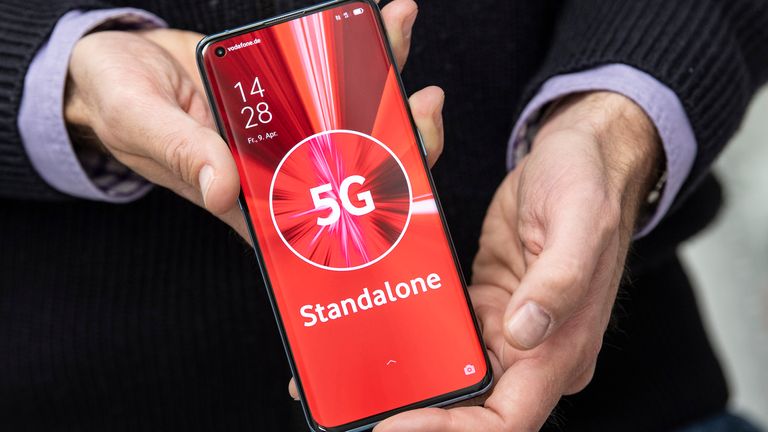5G connectivity is overhyped – and many users are yet to experience improvements in mobile speed or reliability, says a new study.
Research from Uswitch.com found one in six mobile users felt the power of the technology had been overstated, and less than half said they had seen noticeable speed or reliability improvements since upgrading.
The study also discovered an urban-rural divide.
A total of 17% of those in the countryside said they had never been able to connect to a 5G network – three times as many as those in cities.
It found some parts of the UK were struggling for other signals too – in Yorkshire, only 48% of residents said they receive a reliable 4G service, and 14% said they often had to use a 2G network, which dates back to the 1990s.
Mobile networks have begun announcing plans to phase out their older networks in order to free up space for more 4G and 5G services in the years to come.
Explainer: 5G – What is it, what will it do, and is it safe?
Ernest Doku, telecoms expert at Uswitch.com, said that after companies promising to deliver ultrafast speeds to mobiles, it was “no wonder that many consumers still don’t understand what the fuss is about when compared to their everyday experiences”.
It was important to remember, he said, 5G was first trialled in the UK only three years ago, so the technology was “still in its infancy”.
He added: “We’re still only scratching the surface of what it can do.
“When the technology reaches its potential – and more importantly is readily available to all – it won’t just change the speed of our mobile data, but how we live our lives.
“With multiple concurrent users in the home becoming commonplace due to our new hybrid normal, and the rise of plug-and-play mobile broadband as a viable alternative to fixed line services, 5G could well play a pivotal role in connecting our homes in ways we may have never imagined.”
5G is the next generation of mobile communication technology.
It wasn’t until 3G was launched in the mid-2000s that web browsing became ubiquitous on smartphones.
Following that, the increased data capacity of 4G allowed for video and music streaming to become a regular part of the smartphone experience too.
As part of 5G’s rollout, improvements in speed, bandwidth and access were promised to be dramatic.

